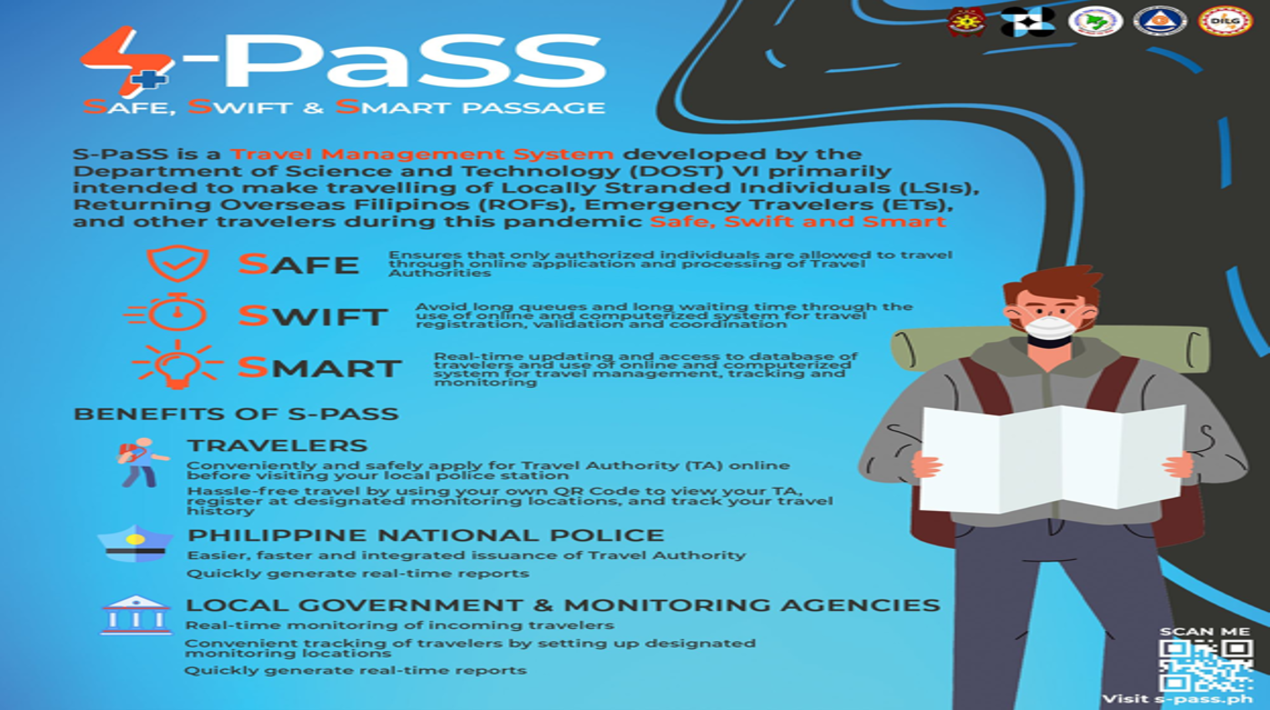
With COVID-19 still showing no signs of slowing down, the Philippine government continues to look for ways to improve its overall digital make-up for the benefit of its citizens and other governing agencies. One of which is opening areas in the country to allow movement of people to aid its economic recovery while also placing necessary measures to help contact-tracing protocols.
Accordingly, the country’s Inter-Agency Task Force (IATF) for the Management of Emerging Infectious Diseases has adopted the Safe, Swift, and Smart Passage (S-PaSS) Travel Management System developed by the Department of Science and Technology (DOST) and will now be institutionalised as the one-stop-shop app for travellers. This is considering the approval by the IATF of the uniform travel protocols for all local government units (LGUs).
The StaySafe.ph app, meanwhile, will be utilised as the primary contact tracing system by the Government. Other existing contact tracing applications will also be integrated with the StaySafe.ph system. The S-PaSS, developed by DOST VI initially as a travel management system, was primarily intended to make a hassle-free journey for Locally Stranded Individuals (LSIs), Returning Overseas Filipinos (ROFs), Emergency Travelers (ETS), and other travellers during this pandemic.
The S-PaSS is also meant to benefit not only the travellers but also the authorities to properly monitor the movement of people in different locations in the effort to prevent the spread of the virus. With the app, travellers can apply for Travel Authority (TA) online before visiting their local police station where the QR Code can be used to view one’s TA, as well as register at designated monitoring locations and track one’s travel history.
For the Philippine National Police (PNP), the tool can integrate the process of issuing a Travel Authority to quickly generate real-time reports. Likewise, in the case of other LGUs and monitoring agencies, the system will allow real-time monitoring of incoming travellers and provide convenient tracking of travellers by setting up designated monitoring locations and likewise quickly generate real-time reports. The system has a local mobility feature that replaces the use of pen-and-paper or logbooks. It can also be used to document and monitor border crossings in LGUs.
The travellers will be monitored by scanning their unique S-PaSS QR Code every time they visit an establishment and office. The system will then automatically record information on its ELogBook for recording and monitoring purposes.
Moreover, rapid adoption of digital technologies can help the Philippines overcome the impact of the Covid-19 pandemic, recover from the crisis, and achieve its vision of becoming a middle-class society free of poverty, according to the report released by the World Bank and the National Economic and Development Authority (NEDA).
The report stated that this pandemic has caused substantial disruptions in the domestic economy as community restrictions have limited the movement of people and reduced business operations nationwide. As we are now living with the new normal, the use of digital technology and digital transformation has become important for Filipinos in coping with the present crisis, moving towards economic recovery, and getting back on track towards the nation’s long-term aspirations.
Likewise, as reported by OpenGov Asia, the COVID-19 pandemic has forced several governments to re-examine the way they do things, how they interact with their citizens and how they keep their country functioning in these unprecedented times. Digital solutions in areas such as government services, education, the media, communication systems, and the economy have allowed some form of continuity in day-to-day life during a lockdown.
Although most Governments throughout South-East Asia are gradually moving towards complete digitalisation, they are all at very different stages of their digital transformation journey. It is also likely that Governments of the future will increase spending on digital infrastructure, adopt data-driven approaches in response to economic recovery, and leverage technology solutions to implement COVID-19 strategies.
















